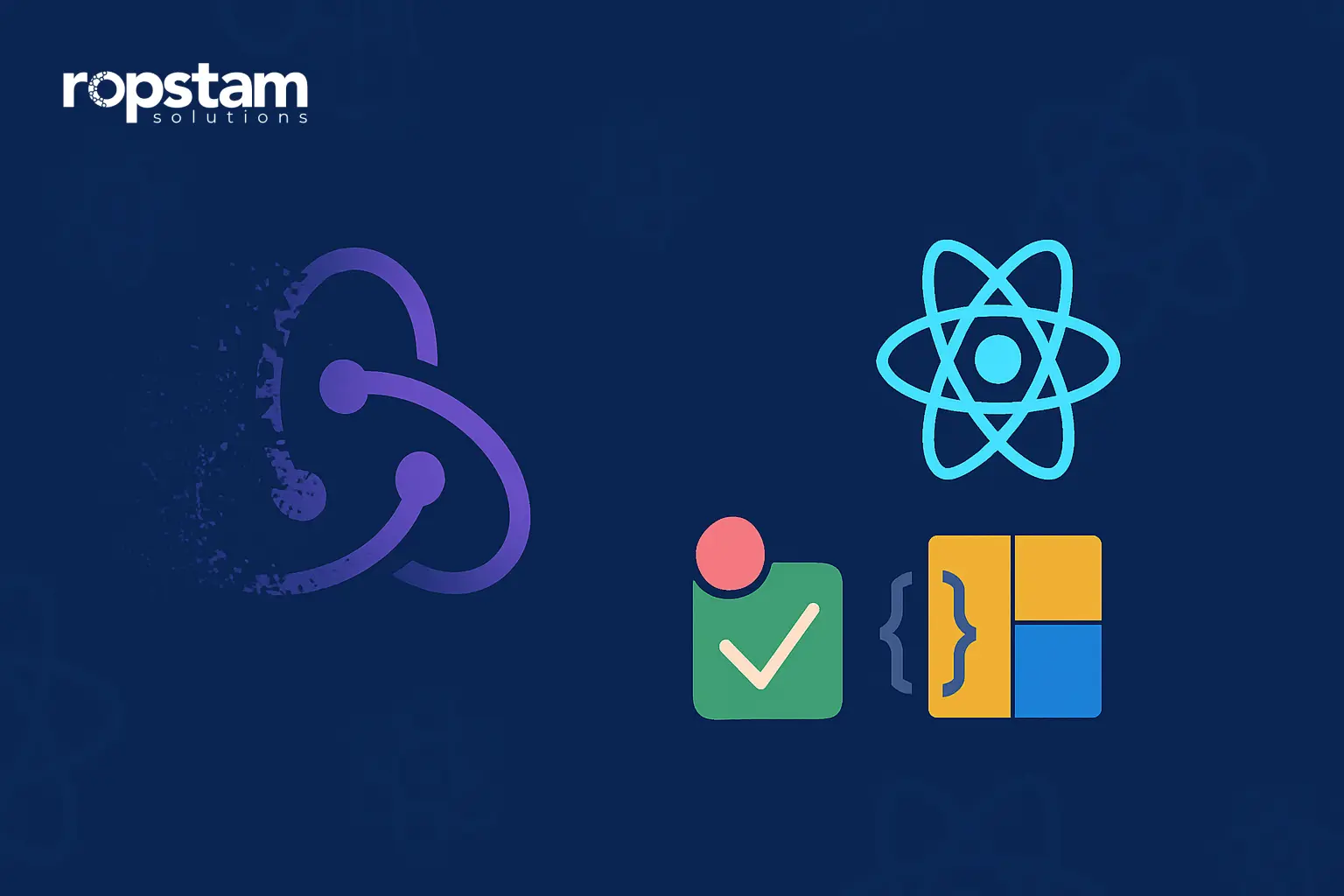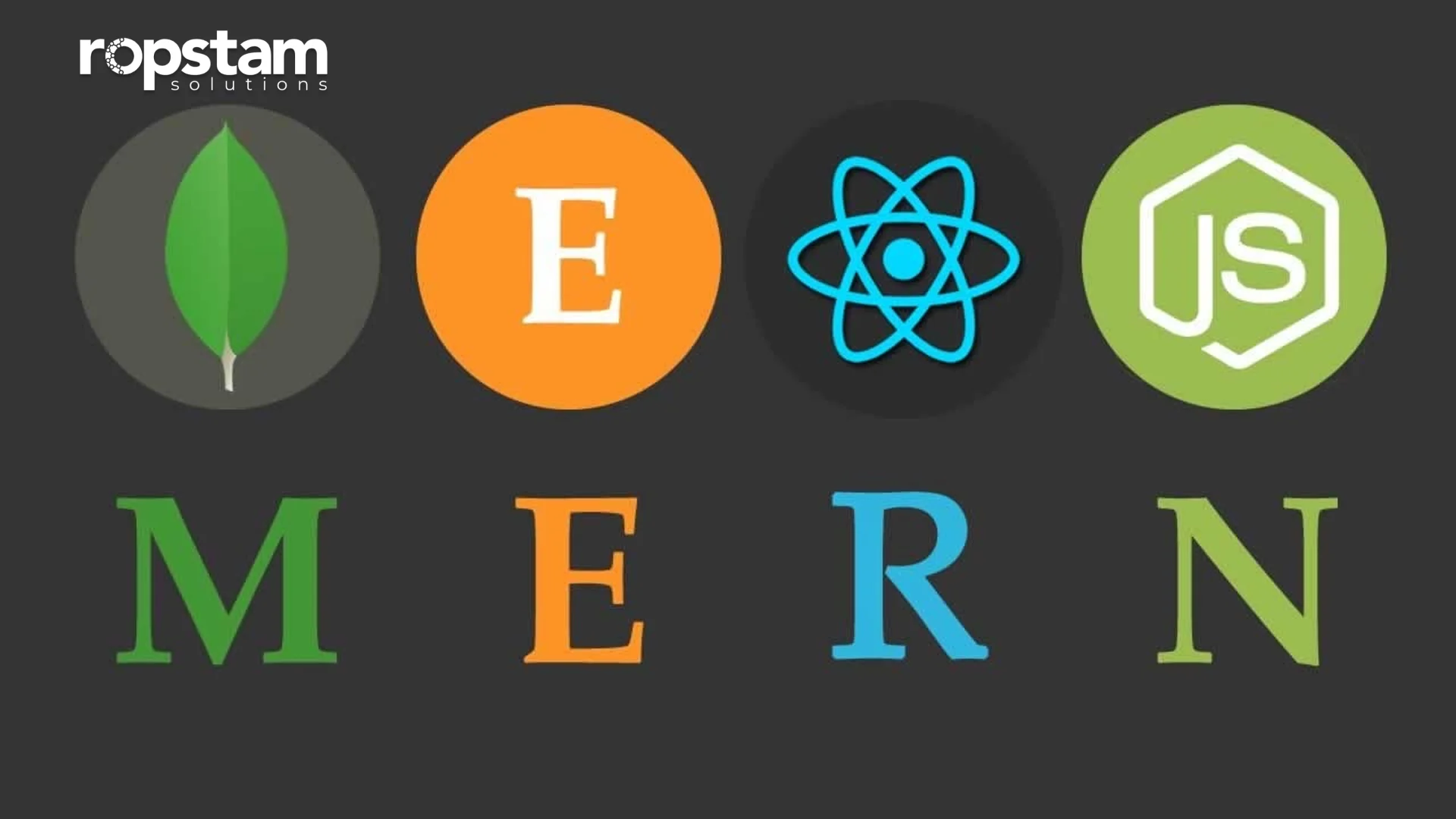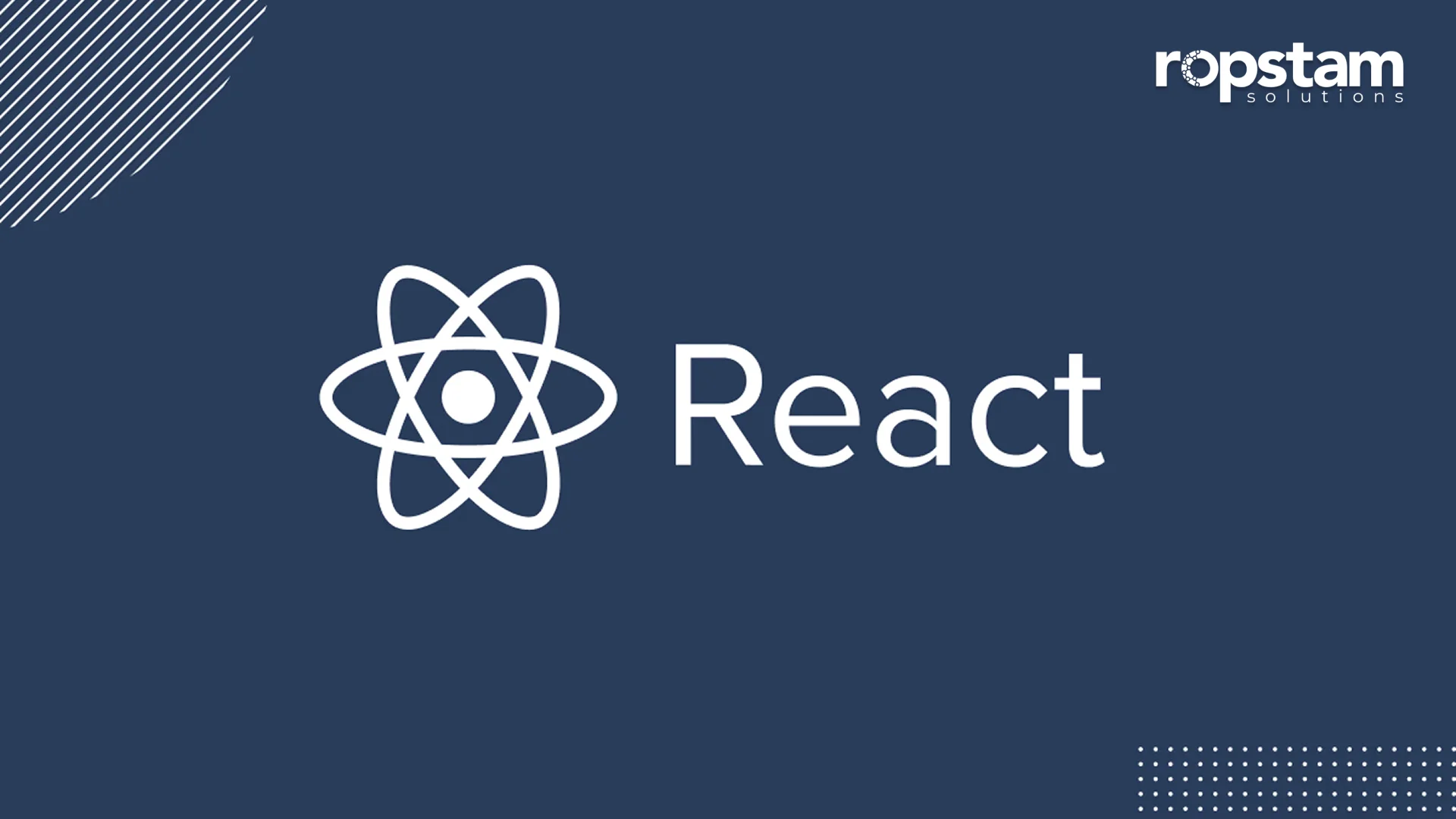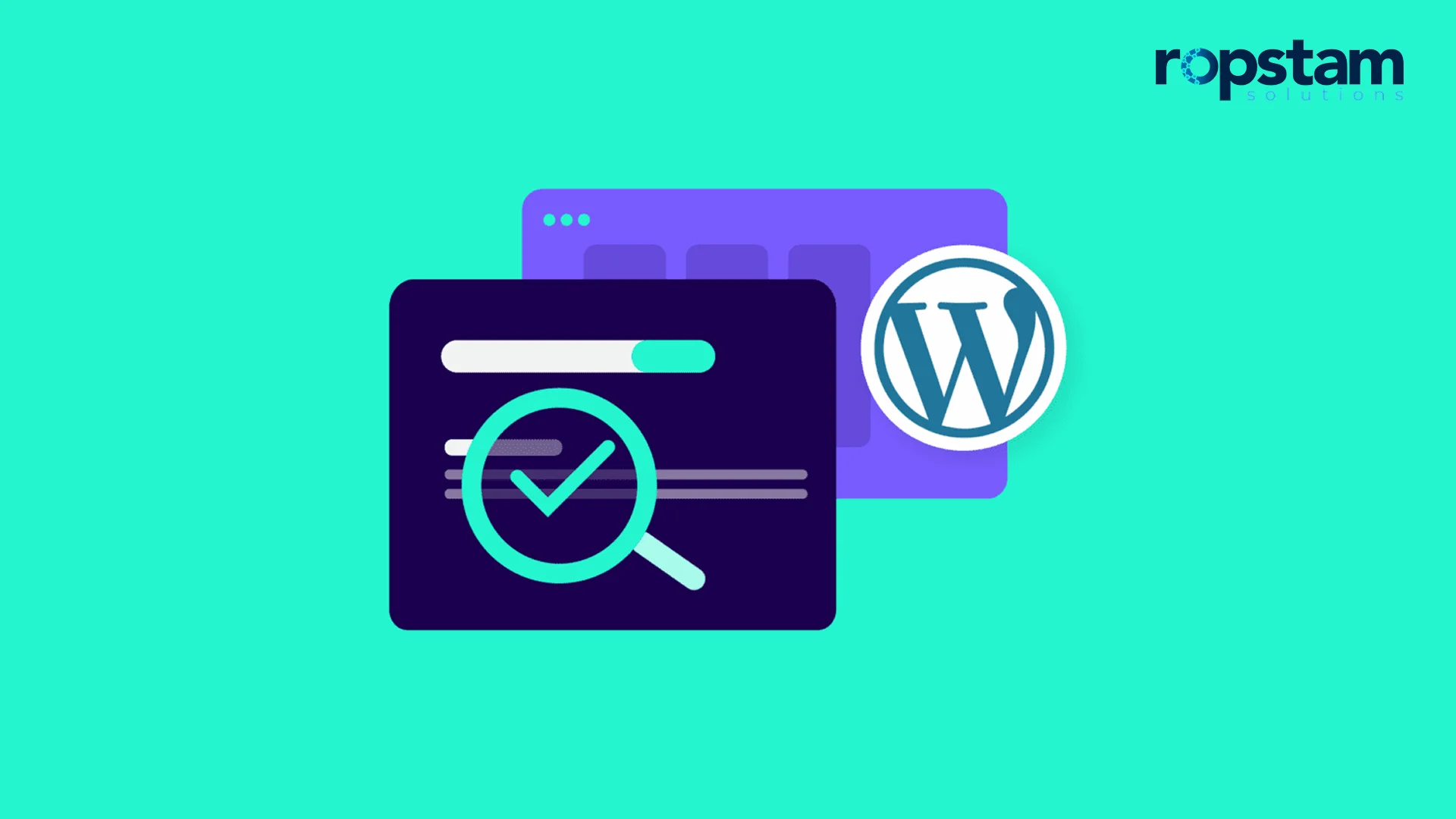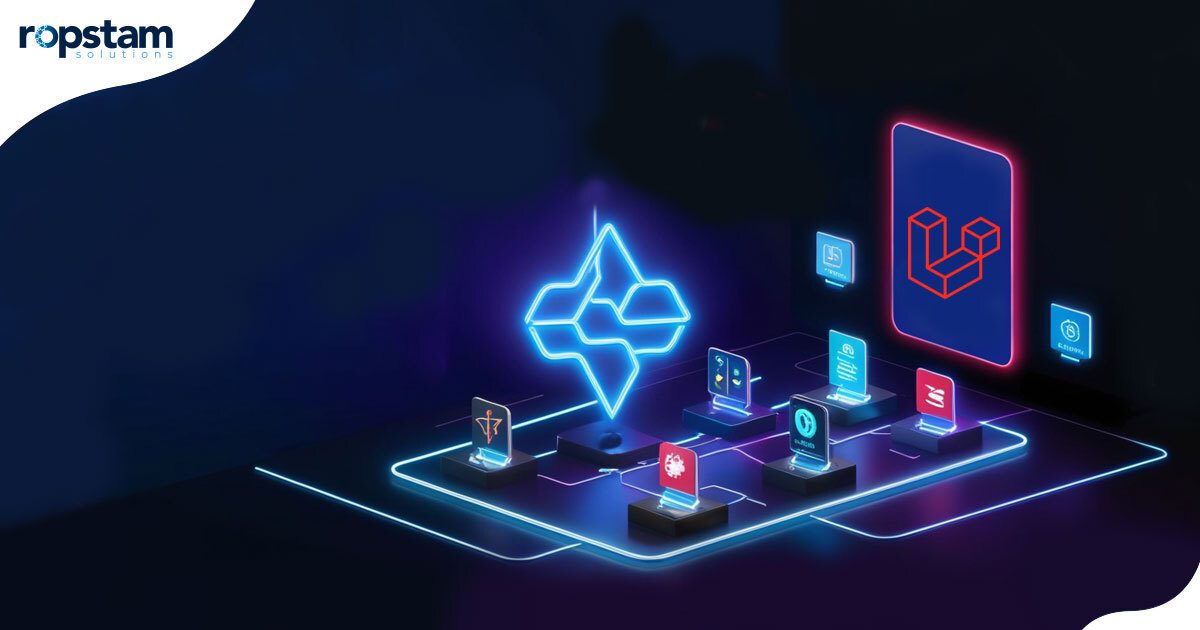In the realm of web development, frameworks are essential tools to accelerate the development process. Frameworks facilitate the developers in creating high-quality, interactive websites by solving a number of inherent complexities associated with web technologies.
Both front and back-end development teams play a crucial role in ensuring the timely delivery of the project. Given the significance of backend web development, frameworks for backend development should be chosen extremely carefully and wisely. Understanding the noteworthiness of backend development, we have compiled a list of some of the best backend frameworks for web development following comprehensive research.
But first, let’s describe the backend web development framework in detail.
What are Backend Frameworks?
Backend frameworks are also known as server-side frameworks. They are basically a library of useful tools that help backend developers in creating the website’s architecture. Such frameworks play a pivotal role in the overall success of your web development project. Primarily, backend frameworks make the job of developers much easier by providing access to a wide array of tools.
In other words, a backend framework for web development is part of an ecosystem that accelerates and automates the web development methodology. Widely regarded as the pillars of a website or web application, backend frameworks consist of a collection of tools that can help the developers.
By leveraging backend frameworks, developers can create web applications with the help of a pre-existing structure rather than manually writing each line of code. This way, the life of developers becomes much easier as they can focus on the inherent logic needed for developing the backend of a website.
It would not be an exaggeration to claim that the success of web development (and mobile app development) largely depends on the selection of a suitable backend framework for mobile app development and web development. That is why every developer must spend considerable time comprehending the scope of a web project, evaluating the level of complexities involved, and choosing the top backend frameworks for website development.
Benefits of Using a Backend Framework
Backend frameworks for web development have several benefits throughout the web development cycle. The main aim of such frameworks is to automate the development process by providing a set of useful tools. Following are some of the distinct benefits of backend web development frameworks:
1) Security
From multiple angles, backend frameworks offer robust security measures. Given that the process of backend web development is heavily dependent on fetching data from databases, linking, and reflecting, implementing security measures is of paramount importance to protect the integrity of security-sensitive data.
Backend frameworks offer protection from outside attacks with features such as data encryption, validation, and multi-factored authentication. Furthermore, the top-notch backend frameworks for creating a website allow the finalized web applications and websites to effectively deal with external problems, lackluster performance, and other issues affecting the overall performance.
2) Consistency
By organizing and giving a proper structure to code, frameworks allow developers to maintain consistency throughout the development process. Consequently, the code becomes easier to understand, analyze, and fix errors. Given that the code becomes easier to comprehend, pair programming is easier to implement thanks to backend frameworks.
3) Modularity
Owing to the remarkable consistency enabled by such frameworks, it also becomes significantly easier to break down complex applications into smaller, manageable modules. As a result, the job of backend developers becomes easier.
This feature of backend frameworks makes them very handy, especially for large-sized, complex websites and web applications.
4) Community Support
Given that the majority of the top-notch backend frameworks are open source, they are leveraged by a large number of backend web developers. That’s why if you are stuck in a loop and can’t find a way to resolve any persistent issue, you can always take to the Internet to ask for help from a massive number of backend developers.
Best Backend Frameworks for Web Development in 2024
If you are searching for top-notch backend frameworks, you have come to the right place. The next section explores some of the best backend frameworks for web development that every backend developer must be aware of:
- Laravel
- Django
- Flask
- Ruby on Rails
- Express.js
1) Laravel
A renowned open-source framework based on PHP, Laravel facilitates the web development procedure by rigorously following the MVC architecture. Boasting an MVC license, the Laravel framework can be easily accessed on GitHub.
According to a Stack Overflow survey in 2022, Laravel was the preferred choice of 9.45% of respondents. Moreover, this backend framework has also received more than 73,000 stars from the GitHub community. Powering more than half a million live websites, Laravel is well and truly the most dominant choice among the backend developers.
Key Features of Laravel:
- Laravel’s Eloquent ORM (Object-Relational Mapping) simplifies database interactions by allowing developers to work with databases using an intuitive and expressive syntax.
- The Artisan command-line tool of Laravel automates various development tasks like database migrations, model creation, and more, streamlining the development process.
- Laravel’s middleware system allows for filtering HTTP requests entering your application, enabling tasks such as authentication, logging, and more.
- Laravel also simplifies database schema management and data seeding, ensuring database changes are version-controlled and reproducible.
- The built-in task scheduler supported by Laravel automates routine tasks, allowing you to schedule and execute commands at specified intervals or times.
- Laravel supports testing with PHPUnit, making it easy to write unit tests and ensure the reliability of your application.
2) Django
Django is another commonly utilized backend web development framework based on the Python language. Utilized in the creation of renowned web apps like Spotify, DropBox, and Washington Post, Django is a free-of-cost framework that backend developers leverage to create complex websites and web applications.
As per a survey in 2022, Django is used by 14.65% of the developers globally. To further illustrate its importance, another key point to note is that Django has received more than 70,000 stars on its official GitHub repository.
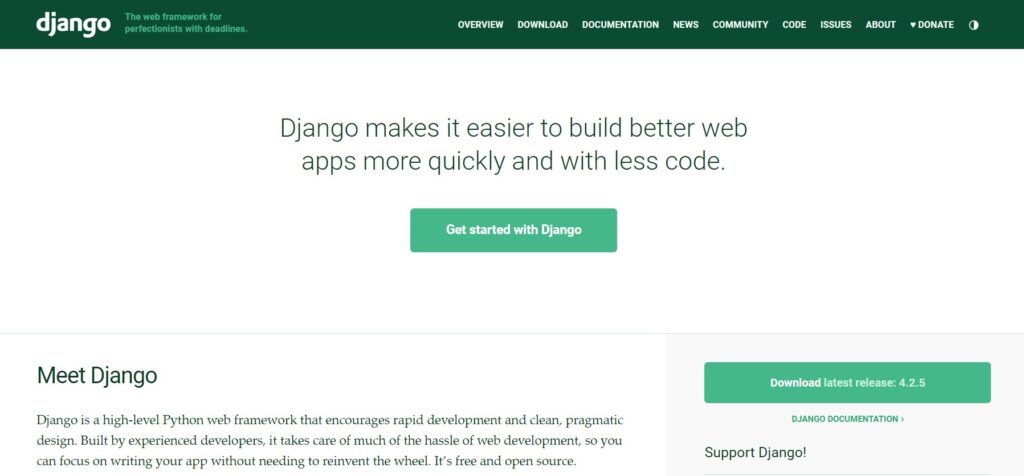
Key Features of Django
- Django’s ORM allows developers to interact with databases using Python objects, simplifying database management and queries.
- Django provides an automatic admin interface for managing website content, making it user-friendly for non-technical users.
- Built-in authentication and authorization features supported by Django systems simplify user management, access control, and security.
- Django’s URL routing system enables developers to create clean and organized URL structures for web applications.
3) Flask
Widely considered one of the best Python-based web development frameworks, Flask allows developers to create advanced, high-level, and stringent web applications. What makes Flask unique is its ability to run on web servers rather than the browser itself. It facilitates the web development approach by producing a simple structure rather than complicated modules.
To illustrate the significance of Flask, a JetBrains report in 2022 claimed that 46% of Python developers prefer Flask as the desired framework for creating web applications. Even as 2024 comes to a close, Flask is extremely popular among web developers.
Key Features of Flask
- Flask is designed to be simple and lightweight, providing essential components for web development without imposing a specific structure.
- Flask is a microframework, meaning it offers only the necessary tools for web development, allowing developers to choose and integrate components as needed.
- By integrating with Jinja2 templating, Flask enables developers to create dynamic HTML templates easily.
- Flask includes a built-in development server, simplifying the development and testing process without the need for additional server configurations.
- This framework is built on top of the Werkzeug WSGI (Web Server Gateway Interface) toolkit, providing essential utilities for request and response handling.
4) Ruby on Rails
Known for its full-stack capabilities, Ruby on Rails is a popular framework known for its ease of usage. The main aim of this framework is to make the website or web application process as simple as possible. By minimizing the amount of hard work required to be done manually by the developers, it accelerates the overall development cycle.
Boasting features like automated testing and a handful of useful tools, Ruby on Rails is regarded as one of the most popular backend frameworks.
Key Features of Ruby on Rails
- Ruby on Rails follows the principle of “convention over configuration,” reducing the need for explicit configuration by relying on sensible defaults and established conventions.
- It enforces the MVC architectural pattern, separating the application’s concerns for better organization and maintainability.
- Ruby on Rails offers scaffolding tools that automatically generate code and templates for common CRUD (Create, Read, Update, Delete) operations, speeding up development.
- This framework emphasizes security, providing built-in protection against well-known web vulnerabilities like SQL injection, cross-site scripting (XSS), and cross-site request forgery (CSRF).
5) Express.js
Built on top of Node.js, Express.js is a well-known backend framework that offers a host of useful tools to developers. This backend framework is part of the famous MEAN Stack that developers leverage for creating APIs and web applications.
In a Stack Overflow survey not long ago, 22.99% of respondents chose Express.js as their preferred web development framework.
Key features of Express.js
- js provides a flexible routing system that allows mapping HTTP verbs and URLs to specific handler functions. This makes it easy to structure RESTful APIs and web applications.
- It allows the addition of middleware functions that process requests and responses. This allows factorization of common functionality like authentication, logging, compression, etc.
- js supports configurable template engines like Pug, Mustache, etc., for server-side rendering of dynamic content.
- js also has a built-in error handling system that can be used to render custom error pages and do logging/monitoring.
We Suggest You Read
You should read our comparison of Express.js and Nest.js to get insights that’ll guide your decision-making process.
How to Choose a Backend Framework?
As mentioned earlier, choosing a backend framework is a pivotal decision in web development, significantly impacting the performance, scalability, and maintainability of your application. To make an informed choice, you must consider several key factors.
Firstly, assess your project’s specific needs. Understand the complexity, scalability requirements, and expected traffic. Robust, full-stack frameworks like Ruby on Rails and Django offer extensive tools but might be overkill for simpler projects. Lightweight microframeworks like Flask and Express.js are excellent for smaller applications.
Compatibility with your tech stack is crucial. Ensure the chosen framework integrates seamlessly with your front-end technologies, databases, and any third-party services you plan to use. This prevents compatibility issues down the line.
Furthermore, community and support of a peculiar framework also matter. Frameworks with active communities often receive regular updates and security patches and have extensive documentation and community-contributed resources. This support can be invaluable in troubleshooting and maintaining your application.
You should also consider your team’s expertise. If your developers are already familiar with a particular backend language or framework, leveraging their skills can streamline development.
Lastly, think about the long-term. A well-established framework is likely to have a longer lifespan, ensuring your application remains viable and maintainable for years to come.
Conclusion
In the modern era of websites’ dominance, choosing a backend framework is an extremely crucial decision for every web developer. There are several factors that influence this process, such as the requirements and scope of a particular project, compatibility with the tech stack, expertise of the development team, and community support of a particular backend framework.
At Ropstam Solutions, we have an expert team of web developers – expert in both front and back end development, With more than a decade of experience, we have a reputation of delivering quality websites and web application projects to our satisfied clients. If you are interested in our services, contact us now.


